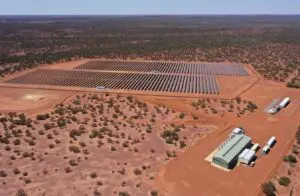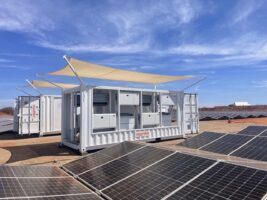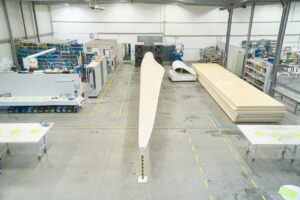Offshore wind pioneer turned film producer Andy Evans has returned to the Victorian town of Yarram where it all began for the Star of the South.
As Australia’s most advanced offshore wind project, the Star of the South could provide almost one fifth of Victoria’s energy needs and be the state’s best shot at replacing old coal plants with reliable power.
It typically takes a decade to develop an offshore wind farm, but less than that to create a film telling the global story of decades of offshore wind and its planetary power.
Launching his documentary film Planet Wind at Yarram’s historic Regent Theatre, Mr Evans shared the red carpet and quaffed fine Gippsland wine with locals who are helping to create the new industry.
Showings are being held in regions tagged for future offshore installations – Fremantle, Newcastle, Wollongong and Bunbury – along with a US premiere in April.
“About 15 months ago I was getting very frustrated about people not really understanding the opportunity we’ve got in front of us … and how great a country we could be,” Mr Evans told AAP.
A project proponent for more than a decade, he said it was not enough to write business plans and hope that Australia would adopt offshore wind.
Nor was offshore wind about “bleeding hearts” trying to save the planet, he said.
“It brings regional development and intergenerational opportunities on a large scale, particularly in regional areas, and has been a real saviour in the UK in areas that have been decaying for decades.”
Mr Evans recently landed from a whirlwind 48 hours in Paris where he met with energy luminaries, returning home in time to shake off the jet lag and take his daughter to a Taylor Swift concert in Melbourne.
The co-founder and former chief executive of Star of the South is now CEO of Oceanex Energy, which is planning to develop up to five offshore wind projects.
These include a $10 billion project off the coast of NSW’s Illawarra region, close to the town of Wollongong and industrial heartland of Port Kembla, that would bring 3000 jobs in its construction phase.
Offshore wind has been operating in the North Sea and Baltic Sea since the 1990s and more recently in China, Japan, South Korea and the US.
The world’s largest offshore wind farm, the Dogger Bank project being built off the northeast coast of England, will be able to power six million homes.
Most of the UK’s wind power already comes from offshore and the rest of Europe is also using the clean energy source as a key plank of achieving climate targets.
Australia must stop the “demonisation” of renewable energy, Mr Evans warned.
He said Victoria, NSW and Queensland were due to close all remaining coal-fired power stations in the next 12 years, and the lack of Australian investment in offshore wind was “embarrassing”.
“Nuclear is not going to get up, it’s far too expensive,” he said.
Mr Evans put the lack of an Australian offshore wind industry down to “absolute smugness” in a country rich in resources it digs out of the ground.
One of the greatest ironies is BHP’s advertising campaign about producing resources that are critical to Australia’s energy transition, which featured shots of offshore wind farms, he said.
While the electricity grid may not be ready for the switch to mostly renewable energy, it’s not too late to catch up as it will be the 2030s before offshore wind powers up here.
Despite government hype, no feasibility licences have been granted to projects and only two of the six planned development zones have been finalised – Gippsland in Victoria and the Hunter region of NSW.
Opposition Leader Peter Dutton has said he’s determined to fight development off the Hunter coast, calling offshore wind an “absolute travesty” in support of Labor’s “reckless” renewable energy rollout.
Exploration licences followed by a feasibility licence are the first steps, followed by a barrage of ongoing consultation and approvals, before an operating licence of up to 40 years can be awarded.
Meanwhile, Australia’s largest farming lobby group says the energy transition is happening too fast and the industry want to find the balance between meeting energy and food requirements.
“Taxpayer funds being used to contribute to the rollout of these energy projects, such as Rewiring the Nation, must be tied to social licence outcomes,” National Farmers Federation president David Jochinke said.
“Our leaders can’t move at snail’s pace when these energy projects are racing through at thoroughbred speed,” Mr Jochinke said.
The $20 billion rewiring fund is the centrepiece of the federal government’s “powering Australia” plan that aims to slash the nation’s carbon footprint, given the existing electricity network is the biggest emitter.
Labor says the plan aims to give more people access to clean and affordable energy, not just those who can afford rooftop solar and EVs.
And it will also be crucial for industry, with the offshore wind zones strategically located near historic industrial hubs that previously relied on cheap and abundant coal and gas.
New and upgraded transmission lines are needed to connect a wide array of wind, solar and big batteries to cities, towns and regional communities.
However, consultancy PwC says the retirement of the nation’s fleet of ageing coal-fired power plants will free up some transmission corridors, lessening any land grab.
The latest projects are also lining up along existing transmission infrastructure, to speed up approvals.
AAP










